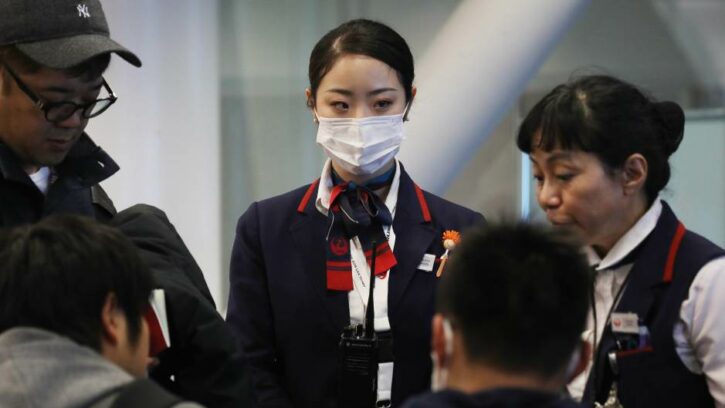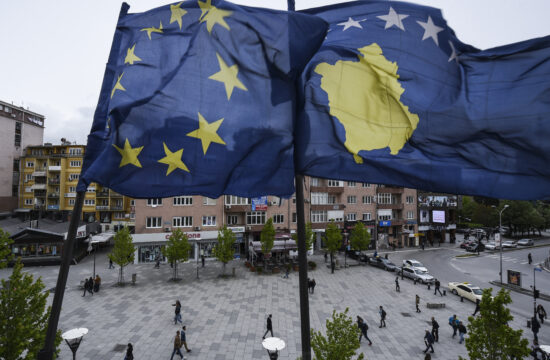
Nearly half of China's population - more than 780 million people - are currently living under various forms of travel restrictions as authorities race to contain the spread of a deadly virus.
The novel coronavirus outbreak has killed 1,770 people and infected another 70,000 in mainland China. According to a CNN analysis, travel limitations of varying degrees are still being enforced in provinces and cities across the country, including Hubei, Liaoning, Beijing, and Shanghai.
Restrictions include everything from self-quarantines to limits on who can come and go from neighborhoods. Some of the strictest measures can be found in four cities in Hubei province, the epicenter of the outbreak, which saw an additional 100 deaths reported on Sunday.
The cities of Wuhan, Huanggang, Shiyan, and Xiaogan have completely sealed off all residential complexes and communities, while the use of non-essential vehicles on local roadways is also banned. Residents in each city receive daily necessities from neighborhood and community committees as they are not permitted to leave their homes.
On Sunday, Hubei announced new measures, including province-wide traffic restrictions on all non-emergency vehicles and the closure of all non-essential public venues. Already there are reports of residential compounds being completely sealed off, with no one able to go in or out except in rare circumstances.
Health screening is to be stepped up, with officials going door-to-door to look for new cases. Anyone displaying potential symptoms “should be immediately reported to the local community or village,” the government said in a circular announcing the new restrictions.
Anyone suspected or confirmed to be infected with the virus, their close contacts, or anyone with a fever, should be “timely treated or placed in quarantine instead of self-isolation at home,” it said.
On the economic side, Hubei said that “companies should not resume production unless allowed by local epidemic prevention authorities.”
When did Xi know?
Officials in Hubei have faced increasing scrutiny about whether they intentionally downplayed reports of the virus when it emerged late last year, or ignored evidence that it was being spread from person-to-person, delaying any efforts to contain it before it was too late.
Multiple officials have been removed from their positions, while others have offered to resign. It had been thought that any blame for the delay in response was contained to Hubei itself, and that central authorities were as in the dark as the international community until late January, when Chinese President Xi Jinping stepped in himself, ordering “all out efforts” to rein in the virus’ spread.
Over the weekend, however, a transcript of a speech Xi gave earlier this month was published. In it, Xi said he first “issued requirements for the prevention and control of the new coronavirus” on January 7.
While the speech underlines that Xi has been personally directing the response to the outbreak – something that has been repeatedly emphasized in state media – the revelation that he knew about the virus when Hubei officials were publicly downplaying its danger, exposes him to the risk of being blamed, along with them, for failing to properly handle the outbreak in its early weeks.
It also raises additional questions for the World Health Organization (WHO), which has previously praised China for its “transparency” and for sounding the alarm early and enabling a global response to the virus.
China is not only sending mixed messages over when and what Xi knew. With the country facing increasing economic pressure – which could have global ramifications – many cities are attempting to return to something like normality.
Speaking last week, Chinese Premier Li Keqiang urged continued efforts “to advance science-based epidemic control, and resume production in an orderly way to better support outbreak response and preserve normal economic and social order.”
A specially customized train left Guizhou in western China for Hangzhou carrying around 300 migrant workers, state media reported. Carriages have “strict temperature monitoring, better ventilation and scattered seating,” and it is hoped it could be a model for returning workers to travel while not being exposed to potential infection.
At the same time, however, cities and provinces most affected by the outbreak are facing stringent new controls, on top of existing lockdowns which have left people trapped inside their homes and unable to work.
Increase in cases
There have been more than 71,000 cases of coronavirus worldwide, with the vast majority of those in mainland China. The largest outbreaks outside of China have been in Singapore and Japan, where the Diamond Princess cruise ship has been docked for almost two weeks now, while health officials tested the thousands of passengers and crew on board.
So far, more than 456 cases have been confirmed aboard the ship, with 99 cases confirmed by Japanese health authorities on Monday. More are expected before the official end of the quarantine period, after which Japanese officials said it would take two or three days for passengers to disembark, during which they will be tested once again.
Hundreds of Americans on board the ship were able to leave Sunday, on a specially-chartered flight organized by the US government. They are swapping one quarantine for another, however, with US authorities saying Saturday that on their return stateside, the passengers will have to undergo another two-weeks of observation and testing at one of two military bases.
Global spread
Taiwanese authorities on Sunday reported the island's first death from Covid-19, the disease caused by the virus. The man in his mid-60s tested had a history of hepatitis B and diabetes and no history of traveling abroad. His death came as another case was confirmed in Taiwan, bringing the total number of cases on the island to 20.
While the vast majority of deaths have occurred in mainland China, there have been fatal cases of the virus in Hong Kong, the Philippines, Japan and France. Cases of the virus have been confirmed in more than two dozen countries worldwide, affecting nearly every continent.
“Right now we're in an aggressive containment mode,” Robert Redfield, director of the US Centers for Disease Control (CDC), told CNN last week. “We don't know a lot about this virus. This virus is probably with us beyond this season, beyond this year, and I think eventually the virus will find a foothold and we will get community-based transmission.”
While more research is needed to fully understand the virus, Redfield said that the CDC has focused on surveillance to track cases and containment strategies to slow possible progression of the virus in the US.
Slowing progression gives more time for researchers to work on developing and testing a vaccine and antiviral drugs for this novel coronavirus. Currently, there is no known cure for the virus.




